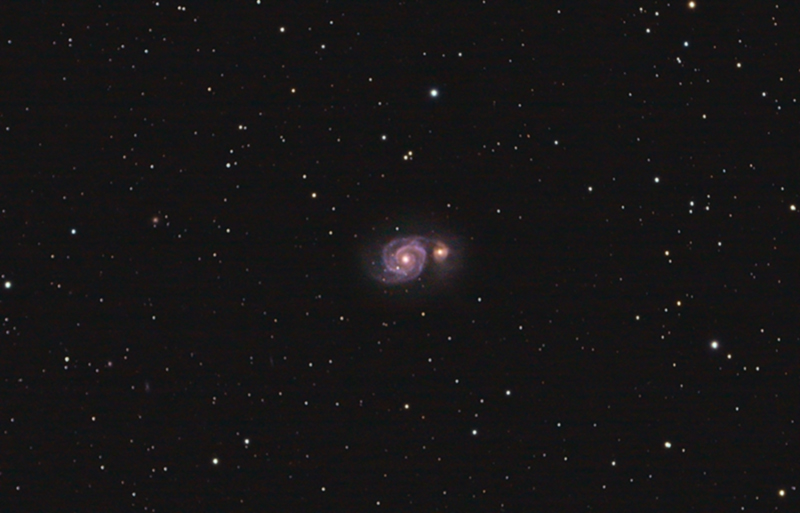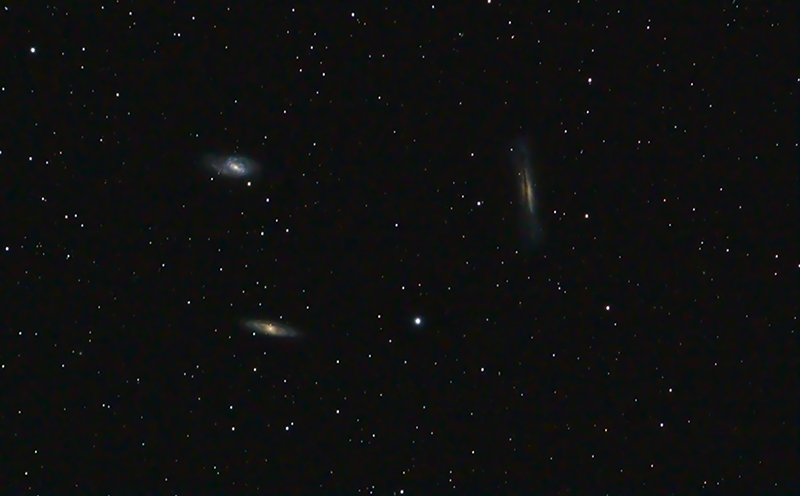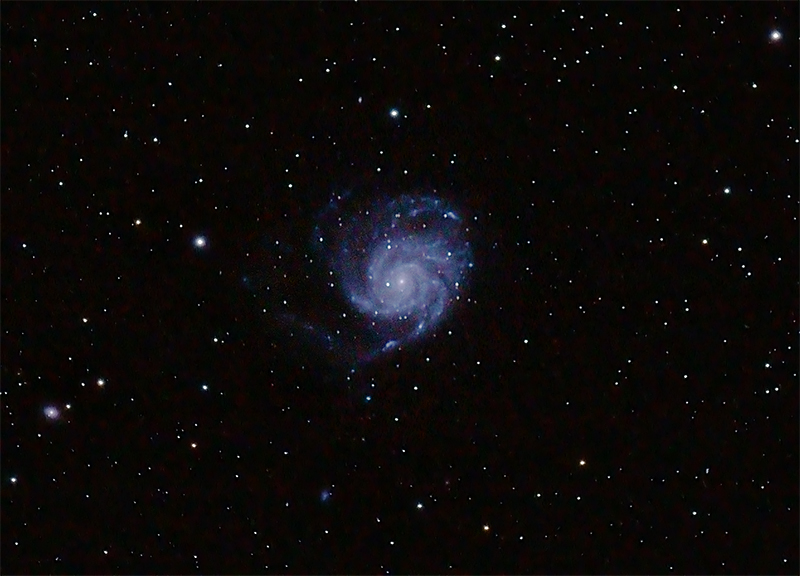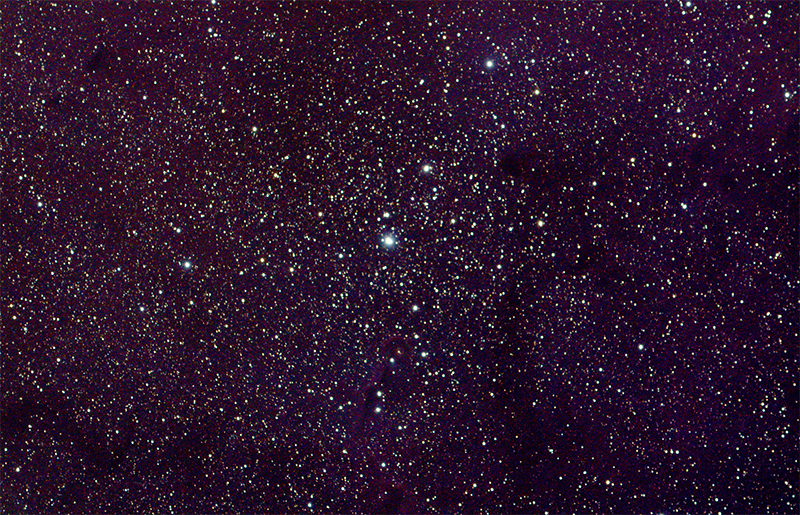Had a clear night last night, and had a chance to try out some cool new gear I bought.
This is a photo of Messier object 51 - Whirlpool Galaxy
Distance from Milky Way: 23 million light years (that's roughly 130,000,000,000,000,000,000 miles from us). Another way to think about it is the light I captured in the photograph below left the Whirlpool Galaxy 23 million years ago. Wow.
Apparent Magnitude: 8.4 (this means it is very dim, not perceivable to the naked eye, even though it's size in the sky is actually much larger than a star). By taking long exposures of the area of the sky where it resides, the details become clear.
Radius of galaxy: 43,000 light years (this means the galaxy in the photo is roughly 500,000,000,000,000,000 miles from one side to the other)
Mass: 160 billion solar masses
I find the numbers associated with our universe amazing.
Equipment:
Orion ED 80 with field flattener, f/7.5 600mm
Sirius EQ-G German Equatorial Mount
Canon 1100D
Subs (Exposures taken):
12 X Dark
15 X Bias
15 X Flat
30 X Light 240" ISO 800
(This means that the image below is a stacked image of 72 individual images, and around 3 hours of the shutter on the camera being open. The Whirlpool galaxy is so dim, it takes that long to gather enough light to get it to come into detail.)

This is a photo of Messier object 51 - Whirlpool Galaxy
Distance from Milky Way: 23 million light years (that's roughly 130,000,000,000,000,000,000 miles from us). Another way to think about it is the light I captured in the photograph below left the Whirlpool Galaxy 23 million years ago. Wow.
Apparent Magnitude: 8.4 (this means it is very dim, not perceivable to the naked eye, even though it's size in the sky is actually much larger than a star). By taking long exposures of the area of the sky where it resides, the details become clear.
Radius of galaxy: 43,000 light years (this means the galaxy in the photo is roughly 500,000,000,000,000,000 miles from one side to the other)
Mass: 160 billion solar masses
I find the numbers associated with our universe amazing.
Equipment:
Orion ED 80 with field flattener, f/7.5 600mm
Sirius EQ-G German Equatorial Mount
Canon 1100D
Subs (Exposures taken):
12 X Dark
15 X Bias
15 X Flat
30 X Light 240" ISO 800
(This means that the image below is a stacked image of 72 individual images, and around 3 hours of the shutter on the camera being open. The Whirlpool galaxy is so dim, it takes that long to gather enough light to get it to come into detail.)




